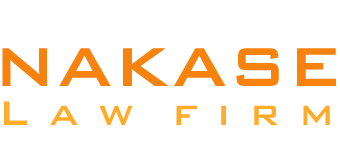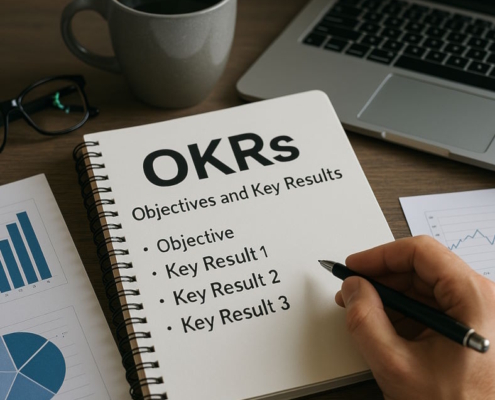What is the purpose of an executive summary in a business plan?
Writing a business plan should be among your top priorities when launching a new company. In your business plan, you may outline your objectives and the steps you’ll take to achieve them, much like a road map for your company.
Any entrepreneur worth their salt knows that having a well-thought-out plan is vital before approaching potential investors or small business lenders for financing. Ultimately, a bank or investor will want assurance that your business is stable before they part with their cash.
From an overview and study of the market to a strategy for financing and forecasts, there are many parts to a business plan. Your business plan will begin with an executive summary. In case you have been putting off finishing your company plan because you are unsure of how to create an executive summary, we are here to help you. Get your business plan off to a good start by following this article, which will define executive summaries and offer ideas on how to write your own.
What is the definition of an executive summary?
At the beginning of your business plan, you should include an executive summary that is concise, to the point, and easy to read. The executive summary is crucial, despite its brief length (just one or two pages).
In an executive summary, you may explain your company’s mission, the value it provides, the reasons investors should back your venture, and how you plan to use their money. The goal of an executive summary is to provide the reader with the necessary information in a concise and engaging way.
Why should you include an executive summary?
Your business plan and executive summary recipients are probably quite busy people. An extensive business plan is lengthy, complex, and has several numerical components. A busy person wants to learn about your company, and they want to learn it fast—not by reading an eighty-page business plan. Your executive summary can help with that.
An executive summary is a perfect way to introduce your company, pique someone’s curiosity, and make your case for investment in a concise and compelling manner. To convince possible investors that their time and money would be well-spent, you should use your executive summary as a sales pitch.
The components of an effective executive summary
Executive summaries are often brief. You need excellent communication skills to sell your business concept, highlight your unique selling points, and outline your growth strategy. Since it is frequently the sole document that a potential investor will read, your executive summary should contain the most important parts of your business plan. The rest of the plan will provide more information later on. The following is a list of the components that should be included in your executive summary; you may think of it as a template for designing your own executive summary.
- The hook
Readers will decide if they want to read your whole executive summary based on the first line and paragraph. That is why the introduction or hook plays such a crucial role.
A hook is, in the broadest sense, anything that captures the interest of the reader. Although an executive summary is a business document with a professional tone, you still want your hook to grab readers’ attention—and not waste any time. You might use a clever statement, an intriguing statistic, or a well-crafted description of your firm as your hook. Make sure to consider the reader’s personality as you design your hook. Offer them something that will differentiate your firm from the competition and leave a lasting impression.
If you can capture their interest in the very first paragraph, they are far more likely to read the executive summary and, who knows, maybe even invest in your company.
- A brief overview of the company
The next step, after capturing the reader’s attention, is to provide some background information on your company. After all, before an investor will put their money into your business, they need to know what you do, the product you offer, and who runs the show.
Provide data about your firm’s history and location in your company description. Make sure to mention your goods or services, the names and precise responsibilities of your founders or executive team, and any other information regarding your management style.
- Analysis of the market
Provide a high-level overview of your company’s target market in the executive summary by way of your market study. It is important to demonstrate that you looked into the market and found a need for your offerings. Consider the following questions: Who are your rivals in this market? Is interest in what you have to offer high? Tell me what sets your company apart from the competition and the benefits you offer.
No need to go into detail in your executive summary; just cover the essentials of your market research. While you should save the in-depth research for another part of your business plan, the executive summary should provide a prospective investor enough information to see if your company has staying power.
- Services and goods
After identifying a need in the market, the next step is to demonstrate how your company can fill that gap. In this part of your executive summary, you should focus on showcasing the service or product that your business provides. Describe your company’s present revenues, its progress thus far, and anything else that stands out.
Now is also an excellent moment to figure out what makes your company unique and how you can use that to your advantage. You should not expect your company to be the pioneer in its industry. Emphasize your competitive advantages and the reasons why your product or service is the best choice for customers.
- Projections and financial data
An executive summary isn’t complete without a review of the company’s financials, and this section is the place to provide just that. Just give the essentials at this point; you’ll go into further detail later in your business strategy. Include your present sales and earnings (if any), your fundraising goals and how they will impact your financials in the coming years, and any other relevant information.
Additionally, this is the place to mention any previous money that you may have received. Lenders will look favorably upon you if you have a history of timely loan repayments.
- Objectives for the future
Not only is it critical to ask for the money you need, but you must also be specific about how you will spend it. Make sure the person you’re requesting money from knows exactly what you’ll do with it.
Are you planning to create a second store, introduce new products, or increase your marketing budget? The last piece of an executive summary should explain the long-term goals of your company and emphasize how raising capital will bring you closer to those goals.
A guide to crafting an effective executive summary
Not everyone will pay attention to your executive summary, no matter how thorough it is. Both the content and the style of writing can be of equal importance. Finding the right mix of formality, friendliness, confidence, and humility is key when crafting an executive summary.
- Minimize wordiness
Your business plan should cover all of the same content in an executive summary, but in a substantially condensed version. Concisely drafting an executive summary is a challenging undertaking that will need multiple changes before reaching the final version. You should write this piece of your executive summary last, after you have assembled all the other components, even if it is the first section.
Review your company strategy and make note of the most crucial topics using single-line bullet points. These will serve as the basis for your executive summary. Review those bullet points again and cross out any information that isn’t essential to grasping your company.
You may begin crafting your executive summary after you have refined your list of bullet points. Edit it again once you’ve written it to cut out any extraneous details. Keep in mind that this section is just for highlighting key points; the remainder of your business plan is where you may provide additional depth. People are more inclined to read your executive summary if it is concise and easy to understand.
- Make use of bullet points
Using bullet points is a quick and easy approach to make your executive summary more accessible. More white space will make your executive summary simpler to read and faster for people who are skimming or reading on a tight schedule.
If you want your executive summary to be easy to skim, which is probably what your reader is doing, be sure to use short paragraphs, simple words, and bullet points. Readers are more inclined to continue reading if key statistics and crucial facts stand out.
- Engage your listeners
Consider your audience—the people you’re trying to persuade—as you craft the executive summary. An effective way to grab the reader’s attention in an executive summary is to tailor it to their hobbies and personality.
Some examples of personalization include including the recipient’s name in the greeting, tailoring your details to their interests, and using an informal tone. Since it is a business document, an executive summary should seem official. The use of slang or other forms of creative language may be acceptable in some fields, while others may prefer more formal language.
Always adapt your tone of voice to the person you are speaking to. That may be polite and formal, knowledgeable and curt, casual and friendly, or any other suitable tone. As an additional step, you may need to revise your executive summary depending on who you’re writing it for.
- Focus on what you do well
Highlighting your company’s distinctive selling points is a great approach to grab readers’ attention. To pique a reader’s attention and convince them to invest in your firm, you need to highlight its strengths, which are also its distinctive selling points. From the very beginning of your executive summary, make sure to emphasize these characteristics.
- Get someone to read it over
You should find a test reader when you have finished writing and revising your executive summary. A business owner or someone working in your field may provide invaluable insight, but it’s also a good idea to recruit a beta reader who isn’t an expert in your field. Having many sets of eyes on your executive summary can help you catch any clumsy wording and ensure that it’s easy to grasp for everyone.
In the absence of a test reader, you may check your work for clarity and grammar mistakes with apps like Hemingway App and Grammarly.
What is the ideal length for an executive summary?
There is no hard-and-fast rule about the length of an executive summary. It all relies on how long your business plan is and how much knowledge the reader needs to properly understand what you’re asking. However, you should make it as brief and to the point as possible. A good rule of thumb for an executive summary is between one and two pages.
While you may play about with the margin and font size to make it somewhat longer or shorter, remember that readability is equally crucial. Make sure your executive summary has adequate white space and a legible font size for your reader. No one will bother to read your whole business plan if the executive summary is a pain to read.
Executive summary pitfalls to watch out for
The guidelines for crafting an excellent executive summary aren’t always crystal clear, but there are certain obvious pitfalls to avoid.
A good executive summary stays away from:
- Centered on financial investments: Instead, you should aim to pique the reader’s attention to the point that they either read your business plan in its entirety or at the very least agree to meet with you.
- Overused expressions, exaggerated statements, and clichés: This is not a marketing document; it is an executive summary. It ought to be simple and easy to understand.
- Just as critical as finding the correct tone and providing the reader with the essential information is avoiding the executive summary no-nos.
The bottom line
Despite its brevity, crafting an executive summary is no easy task. An executive summary is a condensed version of your whole business plan that includes your introduction, description, market research, financial forecasts, and request all packed into a single or two pages. Simplifying complex ideas into their most basic forms requires patience and several revisions. To ensure that the executive summary of your business plan is flawless, set aside sufficient time to compose it and ask for feedback from trusted friends and coworkers.
But there are resources that can streamline the process of writing your executive summary and the rest of your business plan. An excellent first step is to get a business plan template; secondly, business plan software is useful for helping with the actual construction of the plan. Since a well-crafted executive summary might sway investors to back your company, you should seek out whatever assistance you can.






























